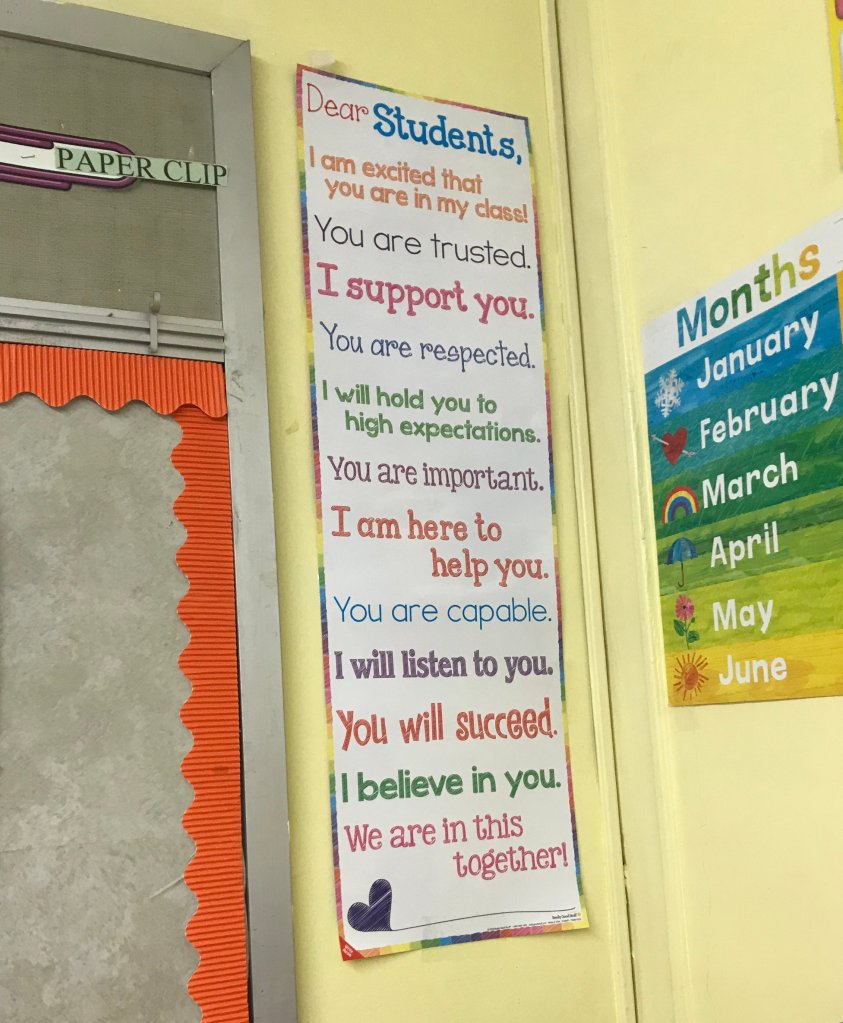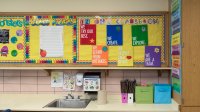Social and Emotional Learning on the Walls
The messages found on school and classroom walls should reflect the values that staff and administrators hold dear.
I once worked with a colleague who focused on social and emotional learning (SEL) for parents. She always maintained that anything that is important to a family is either on the refrigerator… or in it. She made a point of designing materials that could be put on the fridge with magnets that would remind parents of ways to prompt SEL in their kids on a daily basis.
I was reminded of this last October, when a delegation from the Singapore Ministry of Education visited schools in Paramus, Montville, and Roselle, New Jersey, to see how these buildings put SEL into action. These schools have powerful, optimistic visions of their students’ futures and see SEL as essential to student success in school and life. Some of their schools have received Promising Practices and School of Character awards from Character.org and have been recognized by New Jersey’s School Culture and Climate Initiative.
‘A CAT Scan of the Soul’
I couldn’t help but notice the attention that the delegation paid to the walls of the classroom and the hallways of the school. I was curious about this and was informed that regardless of what people might tell you they are doing, what they have created and placed on their walls is a great clue to what they value the most. One person described it as being like “a CAT scan of the soul.”
The delegation was looking at the walls for answers to certain questions—questions that almost always were answered with some version of “yes.”
Here are examples from the three New Jersey school districts just visited and some others.
Emphasizing SEL Skills and core values
The most powerful indicators of core values are not signs that state them, but rather work displayed that integrates them and puts them into action. In one school, every day, in addition to saying the Pledge of Allegiance, middle school students recite these pledges that they cocreated and posted on classroom walls, embodying the school’s core values:
Pledge to Myself
This day has been given to me fresh and clean.
I can either use it or throw it away.
I promise myself I shall use this day to its fullest, realizing it can never come back again.
I realize this is my life to use or throw away.
I MAKE MYSELF WHAT I AM.
Pledge to the Universe
I pledge allegiance to the world
To cherish every living thing
To care for EARTH, SEA, and AIR
With PEACE and FREEDOM everywhere!
applying SEL skills to academics
One way of applying skills to academics is to ask students to write letters to characters in books they are reading that reflect the SEL or character lessons they are receiving. One of my favorites was posted on a bulletin board in a first-grade classroom where students participated in the Rutgers University Social Decision Making/Problem Solving Program (SPS):
Dear Big Bad Wolf,
You shouldn’t kill the little pigs! Let them live. You need SPS. You’ve got problems!
From, Billy
In other classrooms, during social studies, students were asked to write or draw responses to the questions, “What do I think would make the world a more peaceful place?” and “What are ways to be more conscious of our classroom and school environment?”
applying SEL skills to school issues
Almost all SEL programs include a systematic problem-solving strategy that students learn. Have students use this strategy and/or core values to propose solutions to school problems that are then posted on the walls as reminders about how to handle certain situations.
In one class, each student was asked to write about the theme of “No Violence” based on their school’s problem-solving model and core values. Groups of responses were posted on the wall on a rotating basis. Here is one example:
There should not be any violence in this school. Not even at any other school. We need to Stop, Choose, and Move On. We need to persevere and not fight. We have to respect other people’s boundaries. No violence! Persevere! Be kind to others!
Emily, second grade
reflecting positive commitment to the classroom or school
The site visitors felt that messages from teachers to their students posted on the wall as a constant and tangible reminder of support can be inspiring to students and a good reminder to teachers about the bigger picture of their work. Below is a message from one fourth-grade teacher.

reminding Students About key strategies
Expecting students to remember everything they learn in SEL—or any—lessons is not a realistic strategy. By posting reminders of key strategies, teachers make it more likely that students will bring those strategies into everyday classroom interactions. The following was posted in a fourth-grade classroom:
How to Solve Problems
- What is the problem?
- What are some solutions?
- For each solution, ask:
Is it safe?
How might people feel?
Is it fair?
Will it work? - Is it working? If not, what can I do now?
reminders about caring, kindness, and support
As with the SEL strategies, reminders about relationships improve the classroom climate and help students reflect on their own behavior. These are most effective when cocreated with your students. This poster was found in a second-grade classroom:

A combined fourth- and fifth-grade classroom displayed the following:
What Makes a Friend a Friend
F—Forgives you
R—Respects you
I—Involves you
E—Encourages you
N—Needs you
D—Deserves you
S—Supports you
As the delegation completed its visits to schools, Montville school counselor Doug Stech spoke to how engaging youth directly “activates SEL skills and fosters inclusiveness.… We made a change from finding joy in success to finding success in joy.” And Roselle superintendent of schools Dr. Nathan Fisher provided an apt summary: “There is no ‘Roselle’ without SEL.” We might take the liberty of saying there is no SEL learning without the walls speaking.
